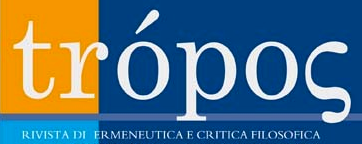Mythologie de la source
Le silence du visible et son interprétation par Socrate (en relisant le prologue du Phèdre)
DOI:
https://doi.org/10.13135/2036-542X/8048Keywords:
evidence, description, image, soul, myth, interpretationsAbstract
A rereading of the prologue of Phaedrus in search of the motif developed in the dialogue leads us to the discovery of a wide use of indirect knowledge methods deriving from a confrontation between sensitive experience and representations and images. The myth evoked and its interpretation involve two aspects of the manifestation: naturalistic (or physical) versus phenomenological (or ontological). The novelty lies in the part assigned to interpretation and to Socrates’ apparent refusal to state his position on the truthfulness of the myth. A form of philosophical realism is opposed to sophistical positivism: neither the cosmological tradition that informs myths nor their use in initiation processes (in a psychagogic approach), which necessarily implies an individual experience of them, can be reduced to a formalistic use of logos. The protagonists go through a katabasis: they travel down into themselves, in search of the place where the nature of life, the soul, is endowed with a reflective sensibility that opens onto presence and motion.


